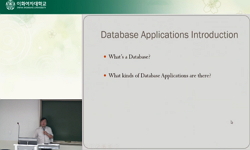Due to its high theoretical capacity in the conversion reaction, Co3O4, a transition metal oxide, has been attracting attention as an anode material for lithium-ion batteries. Comparing conventional slurry method with the electrophoretic deposition (E...
http://chineseinput.net/에서 pinyin(병음)방식으로 중국어를 변환할 수 있습니다.
변환된 중국어를 복사하여 사용하시면 됩니다.
- 中文 을 입력하시려면 zhongwen을 입력하시고 space를누르시면됩니다.
- 北京 을 입력하시려면 beijing을 입력하시고 space를 누르시면 됩니다.

코발트 산화물 리튬 이온 배터리 용량 및 사이클 안정성에 대한 코발트 산화물/첨가제 계면 및 결정립 크기의 영향 = Effect of Co3O4/Additive Interface and Crystallite Size on Co3O4 Li-ion Battery Capacity and Cycle Stability
한글로보기부가정보
다국어 초록 (Multilingual Abstract)
Due to its high theoretical capacity in the conversion reaction, Co3O4, a transition metal oxide, has been attracting attention as an anode material for lithium-ion batteries. Comparing conventional slurry method with the electrophoretic deposition (EPD) method without additives (conductive agents and binders), we investigated the effect of the Co3O4/additive interface and thermal annealing-induced Co3O4 crystallite size on Li-ion battery capacity and cycle stability. The EPD deposition system based on Co3O4 active material without additives was not significantly affected by thermal annealing-induced crystallite size. However, the slurry deposition system in which Co3O4/binder and Co3O4/conductive agent interfaces are embedded showed significant differences in capacity and cycle stability. This result reveals that the Co3O4/additive interface in the slurry system works as a limiting step, depending on the Co3O4 crystallite size, for reversible electrochemical reactions associated with Li-ion battery charging/discharging processes. On the other hand, for the EPD system, the capacity was higher than that in the slurry system with superior cycle stability, indicating that the limiting step was eliminated by removing the Co3O4/additive interface. Moreover, the current collector/active material interface was demonstrated to be crucial in determining the intrinsic electrochemical properties of Co3O4 in the EPD system. Our findings contribute further understanding of the relationship between the battery electrode/additive interface and the electrochemical reaction resulting from the conversion reaction in transition metal oxide electrode materials.
참고문헌 (Reference)
1 V. Etacheri, 4 (4): 3243-, 2011
2 G. Huang, 6 (6): 7236-, 2014
3 D. Aurbach, 89 (89): 206-, 2000
4 P. Harks, 288 : 92-, 2015
5 M. Park, 195 (195): 7904-, 2010
6 D. Aurbach, 50 (50): 247-, 2004
7 M. Gauthier, 6 (6): 4653-, 2015
8 T. R. Jow, 165 (165): 361-, 2018
9 M. Ghiyasiyan-Arani, 183 : 107734-, 2020
10 Y. Liang, 14 (14): 1702514-, 2018
1 V. Etacheri, 4 (4): 3243-, 2011
2 G. Huang, 6 (6): 7236-, 2014
3 D. Aurbach, 89 (89): 206-, 2000
4 P. Harks, 288 : 92-, 2015
5 M. Park, 195 (195): 7904-, 2010
6 D. Aurbach, 50 (50): 247-, 2004
7 M. Gauthier, 6 (6): 4653-, 2015
8 T. R. Jow, 165 (165): 361-, 2018
9 M. Ghiyasiyan-Arani, 183 : 107734-, 2020
10 Y. Liang, 14 (14): 1702514-, 2018
11 Y. Zhao, 7 (7): 1601424-, 2017
12 S. S. Zhang, 7 (7): 3569-, 2020
13 T. Li, 410 : 213221-, 2020
14 Y. Shi, 343 : 427-, 2018
15 F. Zhan, 15 (15): 6169-, 2009
16 D. Tian, 54 (54): 8159-, 2015
17 Y. Ma, 5 (5): 1800222-, 2018
18 N. Yan, 116 (116): 7227-, 2012
19 H. M. Otte, 32 (32): 1536-, 1961
20 S. Rahman, 39 (39): 5235-, 2013
21 Z. -S. Wu, 4 (4): 3187-, 2010
22 H. -J. Kim, 9 (9): 1161-, 2020
동일학술지(권/호) 다른 논문
-
Preparation and Thermoelectric Properties of Si-Doped Tetrahedrites Cu12Sb4-ySiyS13
- 대한금속·재료학회
- 권민철
- 2022
- KCI등재
-
실리카 나노입자의 분산도가 주형의 항절강도에 미치는 영향
- 대한금속·재료학회
- 김판성
- 2022
- KCI등재
-
Continuous Synthesis of Monodisperse Spherical Silica Powder Using Tubular Reaction System
- 대한금속·재료학회
- 조영상
- 2022
- KCI등재
-
산화물 환원공정에 의한 n형 Bi2Te2.7Se0.3 화합물의 합성과 열전특성
- 대한금속·재료학회
- 임영수
- 2022
- KCI등재
분석정보
인용정보 인용지수 설명보기
학술지 이력
| 연월일 | 이력구분 | 이력상세 | 등재구분 |
|---|---|---|---|
| 2023 | 평가예정 | 해외DB학술지평가 신청대상 (해외등재 학술지 평가) | |
| 2020-01-01 | 평가 | 등재학술지 유지 (해외등재 학술지 평가) |  |
| 2010-01-01 | 평가 | 등재학술지 유지 (등재유지) |  |
| 2009-12-29 | 학회명변경 | 한글명 : 대한금속ㆍ재료학회 -> 대한금속·재료학회 |  |
| 2008-01-01 | 평가 | 등재학술지 유지 (등재유지) |  |
| 2006-01-01 | 평가 | 등재학술지 유지 (등재유지) |  |
| 2004-01-01 | 평가 | 등재학술지 유지 (등재유지) |  |
| 2001-01-01 | 평가 | 등재학술지 선정 (등재후보2차) |  |
| 1998-07-01 | 평가 | 등재후보학술지 선정 (신규평가) |  |
학술지 인용정보
| 기준연도 | WOS-KCI 통합IF(2년) | KCIF(2년) | KCIF(3년) |
|---|---|---|---|
| 2016 | 1.24 | 1.12 | 0.9 |
| KCIF(4년) | KCIF(5년) | 중심성지수(3년) | 즉시성지수 |
| 0.73 | 0.6 | 0.835 | 0.2 |




 KCI
KCI



